ChinaPlas 2014 Shows Vigorous Demand from Global Plastics and Rubber Industries
Buyers look for green automated solutions in line with global environmental and labor trends
2014/05/15 | By Steve ChuangBy STEVE CHUANG
Asia's largest trade fair for plastics and rubber industries as well as world's second-biggest (after K Fair in Germany), ChinaPlas 2014 (the 28th International Exhibition on Plastics and Rubber Industries) bustled with demand and bulged with an increased number of visitors and buyers from all over the world.
Over nearly three decades this annual show has built a high global profile in the plastics and rubber industries. It has won approval from the Global Association of the Exhibition Industry (UFI), a trade fair body, and is endorsed by EUROMAP (European Committee of Machinery Manufacturers for the Plastics & Rubber Industries).
ChinaPlas 2014 was held April 23-26 at the Shanghai New International Expo Centre, where it spread over 220,000 square meters in 17 exhibitions halls (along with other outdoor halls and suites) and hosted more than 2,900 exhibitors from 39 different countries. Foreign exhibitors from Austria, Canada, France, Germany, Hong Kong, Italy, Japan, Korea, Switzerland, Turkey, the UK, the USA, China, and Taiwan were mostly concentrated in their respective national pavilions in different exhibition halls.
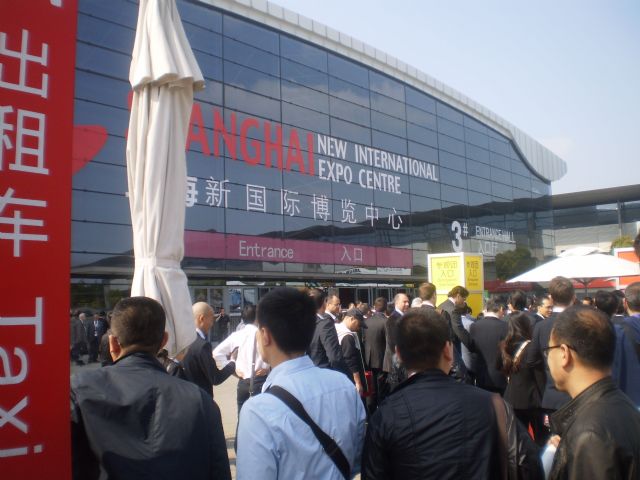
According to statistics compiled by the organizer, Adsale Exhibition Services Ltd. of Hong Kong, this year's show attracted a total of 130,370 visitors during its four-day run, up 14.26% from the last edition held in Guangzhou and a new record high. The turnout included 36,841 people from 143 foreign countries, up a whopping 19.73% and accounting for 28.26% of the total, and included representatives from such heavyweight buyers as L'Oreal, Nike, New Balance, Toyota, BMW, Dongfeng Nissan, Geely, Lenovo, Foxconn, Samsung, TCL, Midea, Hitachi, Coca-Cola, Wahaha, Danone, and Mattel.
At a media party held on the eve of ChinaPlas 2014, Adsale Exhibition's president, Zhou Xiaoxin, said, “Being the largest plastics and rubber exhibition in Asia, ChinaPlas has become a unique platform for professional buyers to exchange ideas and take part in conference events for the plastics and rubber industries, as well as downstreams held during the ChinaPlas exhibition period. ChinaPlas has really become a most valued platform that is facilitating the technology exchange of the industry. Every year ChinaPlas presents new products and technologies, developed and launched based on national policies and social development trends. We believe they will provide you with a sea of information. I hope the organizer and the media will continue our close partnership, walking hand in hand to bring the industry to the next level.”
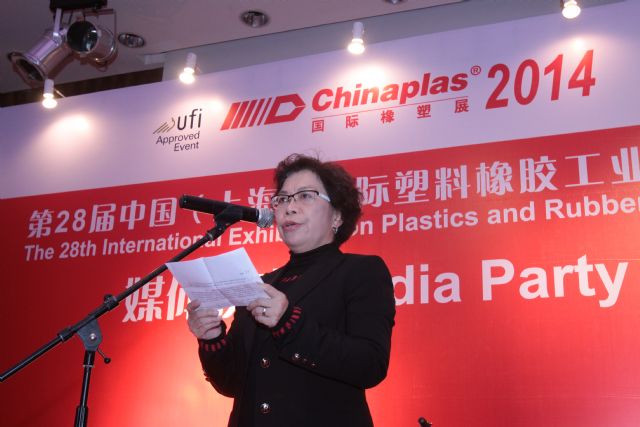
Optimistic Market Climate
In addition to the organizer's decades-long promotional efforts, the show's improved turnout was also attributable to the promising climate of the global market for plastics, rubber, and related machinery, as well as China's increasing influence in the plastics industry.
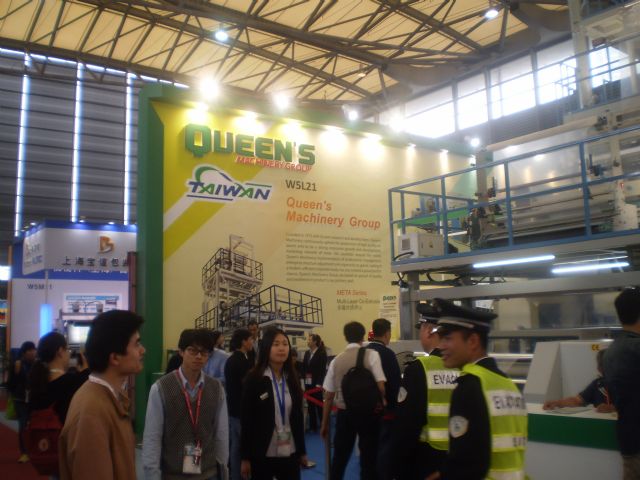
In the plastic processing machinery segment, for instance, global demand is forecast to grow steadily at a compound annual growth rate of 7% to reach US$37.6 billion in 2017, partly due to the replacement of used machines with new ones and partly because of persistently increasing global plastic consumption, according to a report authorized by the U.S.-based market research firm, Freedonia.
Plastic processing machinery for flexible packaging is expected to serve as the main propeller of growth for the industry. Freedonia predicts that packaging machines will grow to account for over one third of all plastic processing machinery shipments in the near future, and Adsales Exhibition forecasts that the output of the packaging sector (including packaging of food, industrial products, medicine, building materials, cosmetic products, etc.) will exceed US$477 billion in 2016.
With the application of plastics steadily widening, Freedonia also forecasts that injection molding machines will grow to command around a 40% share of the segment's output by 2017.
Freedonia predicts that China will remain the world's largest market for plastic processing machinery in the years to come; in 2012 it already commanded a 29% share of the global market in terms of sales value, and by 2017 it is expected to absorb 59% of total sales in Asia the Pacific.
China is today a major consumer of plastics and polymers. During the 2010-2012 period, its imports of the materials from the U.S. soared from US$76 million to US$220 million, consisting mostly of vinyl chloride, vinyl acetate, amino resins, polyurethanes, and related piping products.
Products for All Applications
The show featured more than 3,200 sets of plastic and rubber processing machinery of various kinds, as well as a full slate of materials and related components and parts. The displays were systematically categorized into 11 exhibition zones: Auxiliary & Testing Equipment, Chemicals & Raw Materials, Dies and Mould, Extrusion Machinery, Injection Molding Machinery, Film Technology, Semi-finished Products, Plastics Packaging & Blow Molding Machinery, Rubber Machinery & Equipment, Bioplastics, and Chinese Export Machinery & Materials.
Raw materials and material technology, including high heat-stabilized materials, biodegradable materials, long fiber reinforced composites, halogen-free flame retardants, and non-phthalate plasticizers, were laid out in Halls N1 to N4; rubber machines were showcased in E6; packaging and blow molding machines were presented in W4 and W5; injection molding machines, the largest category by space occupied, were demonstrated in E2, E3, E4 and E5; extruders were displayed in W1, W2, and W3; molds, dies, and related processing machines were accommodated in E4 and E5; auxiliary equipment and inspection instruments were arranged in W4; and film-related machines were on show in W5.
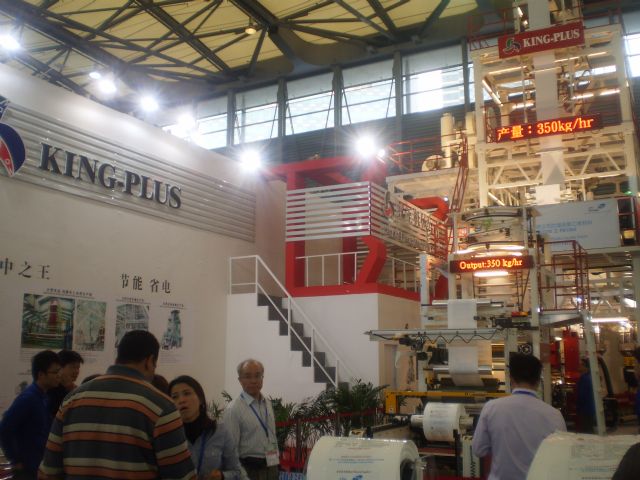
Exhibits at the show included building and construction, daily chemicals, food and beverage, plastic and rubber products, automotives, ICT (information and communications technology), electronics, packaging, lighting, and medical and photovoltaic products.
Trends to Watch
According to the organizer, among the hottest machinery technologies named by buyers in an online vote at ChinaPlas 2014 was 3D printing. Some exhibitors, such as 3D Printing Technology Co. and Arburg GmbH, unveiled their latest models and services to catch the attention of show visitors.
It is no surprise that 3D printing, otherwise known as additive manufacturing, drew the most intense attention from buyers, given that the application of the technology has gradually expanded from prototyping and small-quantity custom production to construction, industrial production, national defense, medical instrument, and jewelry. 3D printing can be applied to the production of not just consumer products, but also precision technical parts; in fact, NASA has used 3D printers to produce rocket engine parts, and plans to send a printer into space next year for astronauts to use in making food in space stations.
According to Gartner Inc., a British market research institute, global shipments of 3D printers are forecast to surge 75% year-on-year in 2014, and then to double in 2015.
Fully electric injection molding machines also emerged as a promising segment at the show. This year, a growing number of exhibitors from China, Japan, and Europe concentrated on promoting these eco-friendlier machines. Among the Taiwanese exhibitors, the Victor Taichung Machinery Co., Fu Chun Shin Machinery Manufacture Co., and Chuan Lih Fa Machinery Works Co. joined the big league in showcasing their own models.
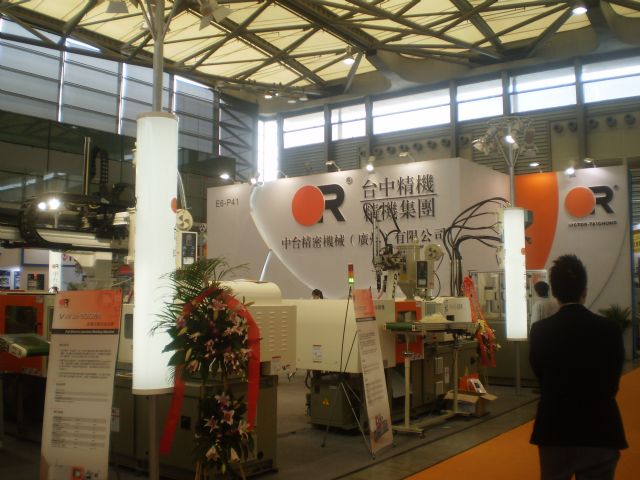
Compared with conventional hydraulic-driven models, fully electric injection molding machines generally feature lower energy consumption, cleaner production, less noise, easier maintenance and control, higher forming quality, easier automation, and Internet connectivity. Such machines ensure clean output without contamination by oil or lubricants, thereby helping to cut production costs.
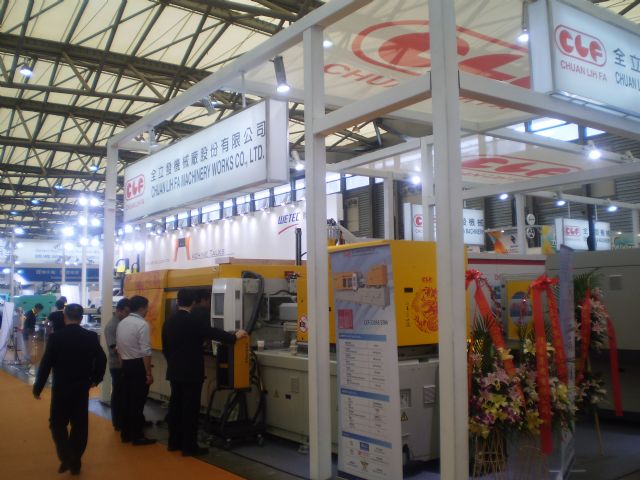
The Taiwan's ChumPower Machinery Corp., a PET stretch blow molding machine supplier founded in 1993, rode the trend by showcasing its fully electric stretch blow molding machine. This machine claimed 30-35% greater output than competing models, along with 10% lower power consumption and 20-25% lower air consumption. According to Peggy Lin, the firm's regional sales representative, the machine can turn out 9,600 units of 550cc, 18-gram PET bottles an hour, or 13,000 units after being beefed up with optional devices, leading the industry.
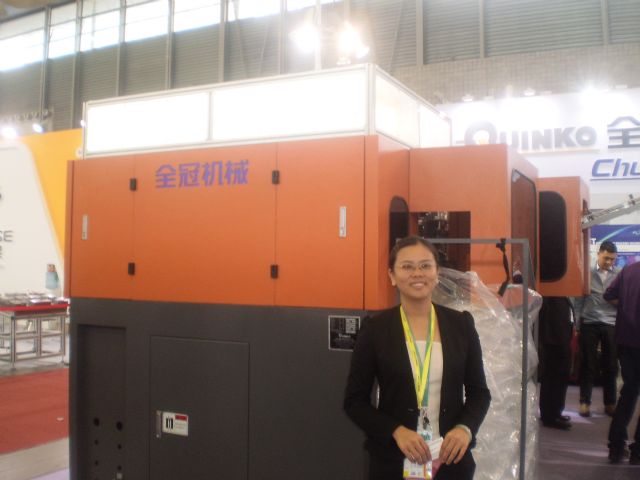
With carbon reduction and eco-friendly production being growing concerns for global industry, fully electric machines will surely continue to exert an influence on the global machinery industry in the future, according to exhibitors.
Since manpower shortages have increasingly hampered manufacturing industries in most developed countries and China, automation technology and related facilities, including industrial robots, remained a big hit with visitors and buyers at the show.
A two-color screwdriver production line with a Fully Automatic Production Cell demonstrated by the Taiwan-based Multiplas Enginery Co. in the Taiwan Pavilion provided a striking example of such technology, integrating two vertical injection molding machines, each with a rotary table and slide table, and a horizontal injection molding machine with hydraulic clamps to form a fully automatic production line for screwdrivers having two-tone handles and packaged in blow molded boxes.
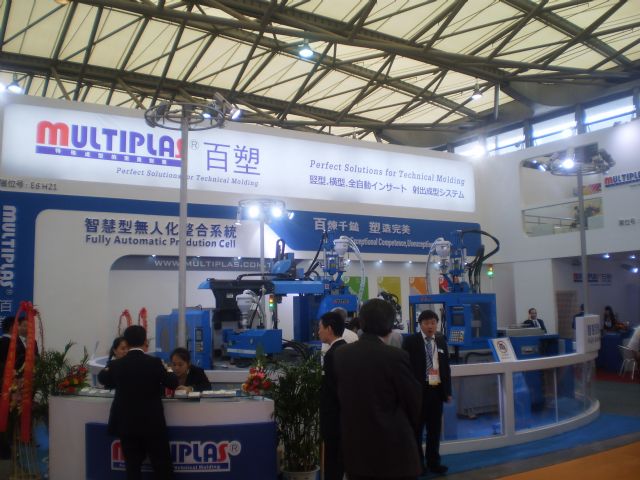
Concurrent Events Echoed Theme Topic
Environmental protection set the tone for ChinaPlas 2014, which featured various concomitant events, including “The City of Tomorrow” and “Green Conference,” to echo its theme topic: “Greenovation – Solution to Sustainability.”
The City of Tomorrow, sponsored by Bayer, Reemolding, and the China Plastics Machinery Industry Association, was an outdoor exhibition area located in the Central Square of the Shanghai New International Expo Centre. It featured exhibits on five separate themes: Green & Alternative Raw Materials, Energy-efficient Machinery, Green Solutions for Customers & Products and Recycling, Helping the Environment Conserving Resources, and Recycling – Closing the Cycle. This venue allowed visitors to interact personally with the exhibits while exploring the latest green technologies and trends in the plastics and rubber industries in a fun-filled atmosphere.
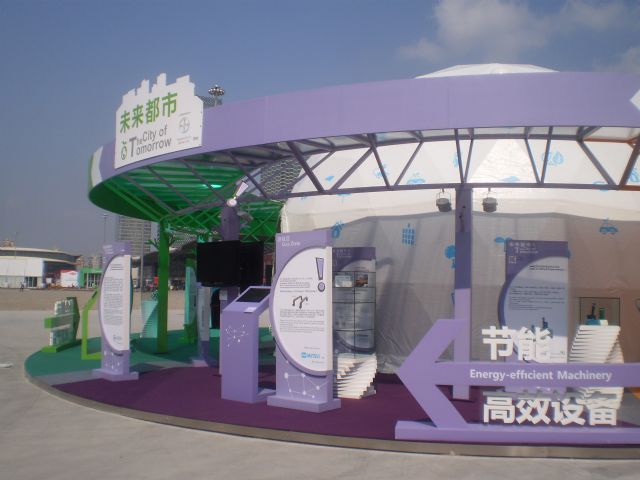
The Green Conference was a half-day event held on Apr. 24 and 25, covering hot topics spanning green molding, 3D printing, plastics recycling, and various solutions for end-of-life plastic waste. Eminent speakers from Austria, China, Germany, Italy, Japan, the U.S., and Taiwan, including Lydia Simon, director of Product Development and Administration, Polycarbonate, of Bayer's Shanghai Polymer R&D Center; Kim Holmes, director of Recyling & Diversion at SPI; and Tao Ninghong, president of the Plastics Recycling Committee of the China Plastics Processing Industry Association, gave lectures and shared their views and insights with the audience.
Sharing the growing optimism among Taiwanese machinery suppliers about economic and market prospects this year, CENS occupied a booth. No. E6R61, in Hall E6 at ChinaPlas 2014, where it passed out useful buyer guides, including Taiwan Machinery and Taiwan Plastic & Rubber, Package and Printing Machinery Special, and provided real-time business matchmaking services to professional buyers in need of high-performance plastic and rubber machinery from Taiwan. With the extensive information that they contained about Taiwanese suppliers of nearly all kinds of machinery, the CENS publications were much sought-after by buyers at the show.
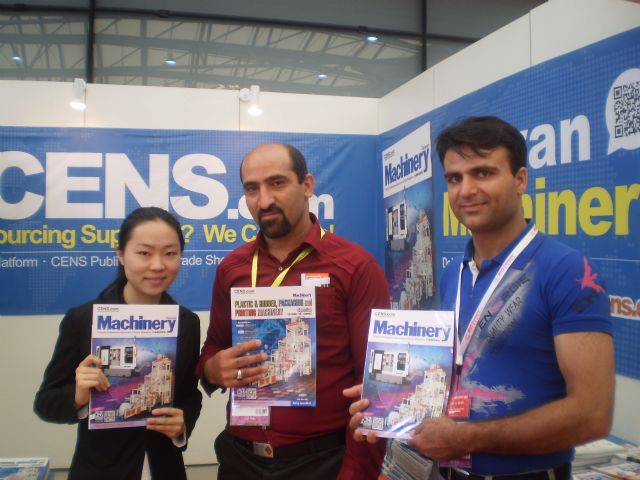
The next ChinaPlas will be held at the China Import and Export Fair Pazhou Complex in Guangzhou on May 20-23, 2015.




